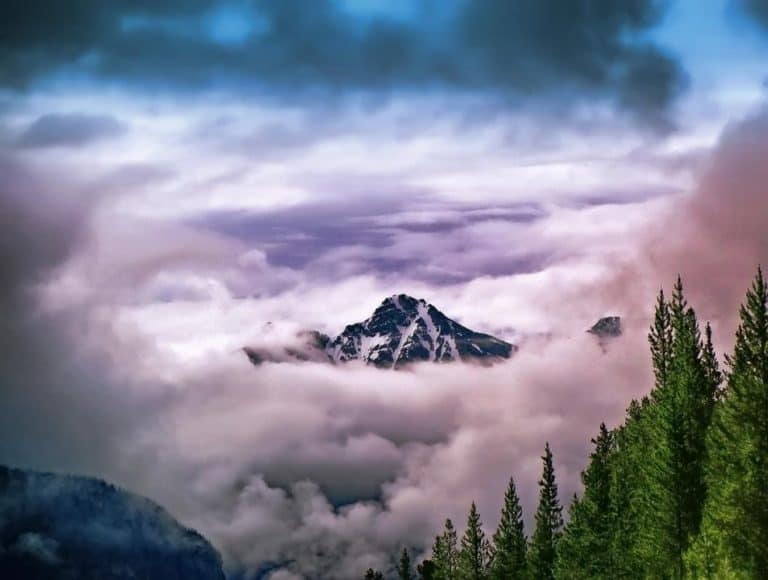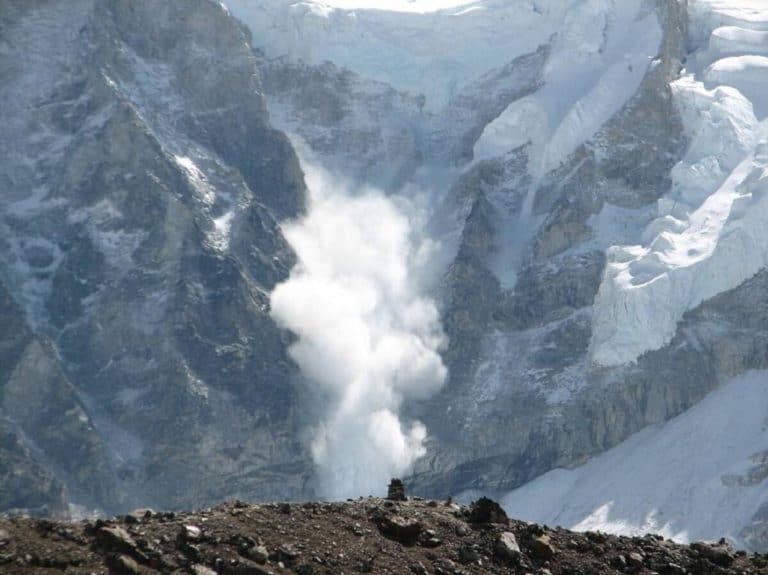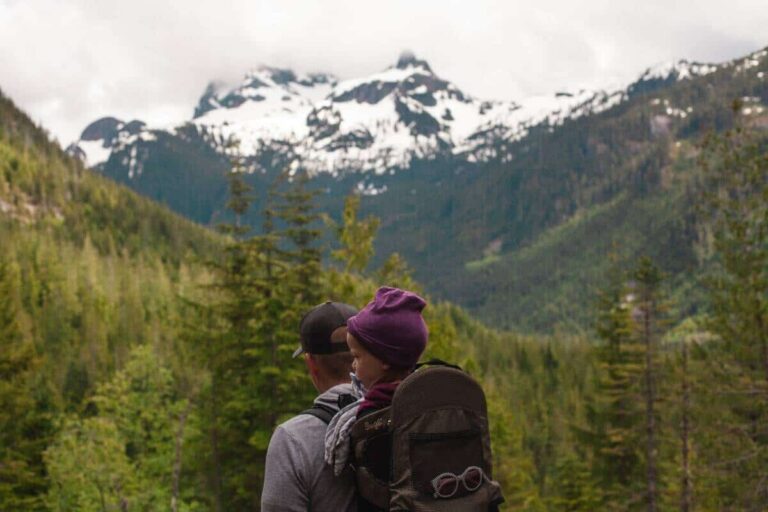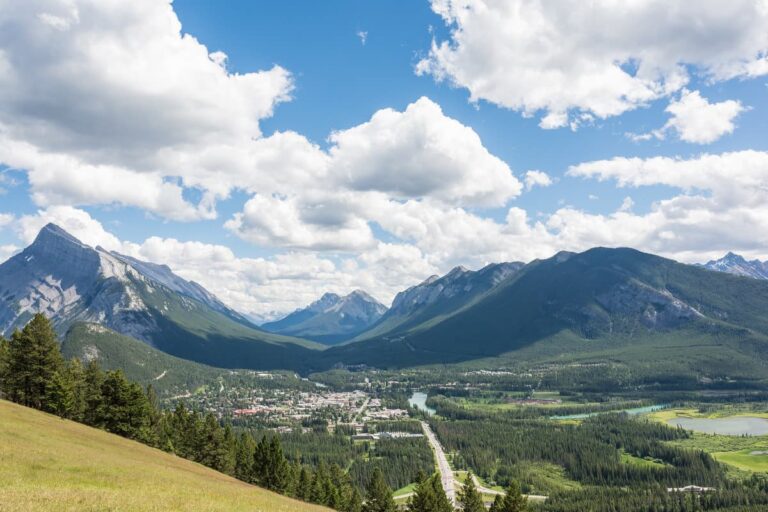The Atlantis of Banff, Scuba Dive to the Park’s Hidden Gem
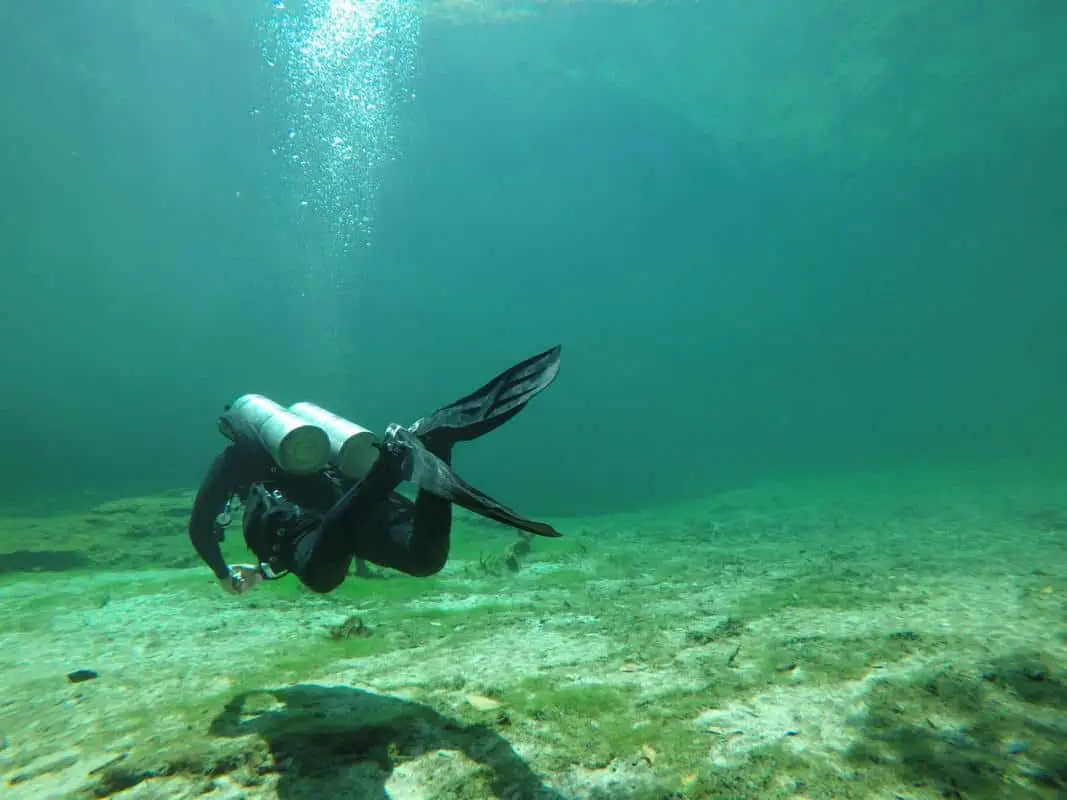
Maybe not the first place you would check for scuba diving opportunities, but Banff National Park actually has two interesting ones in particular: Two Jack Lake and Lake Minnewanka, both close to the town of Banff. Especially the latter is fascinating, much more than you would ever imagine. Read on to find out why.
Ok, let’s give you the answer straight away: Lake Minnewanka is home to an old, submerged dam, bridge and a submerged resort town. No kidding, an actual sunken city in the Rocky Mountains. And accessible to you if an experienced scuba diver.
Once flourishing at the lake’s shore, this townsite remains mainly intact and attracts scuba divers from all over the world. It’s obviously the main focus of all divers who come to dive in the park.
You can dive in other places too, but these locations come nowhere close to Lake Minnewanka’s hidden treasure. Eager to know more?
Let’s have a look at what diving in Banff National Park entails for scuba diving enthusiasts.
Scuba Diving at Two Jack Lake
Diving in Two Jack Lake is perfect for newbie scuba divers who want to hone their skills, as the lake is relatively shallow. It has three different areas for diving. They are all shore dives.
The visibility in the lake ranges from 5 to 10 meters (16 – 32 ft), varying with the time of the year. The lake’s depths are primarily in the 6-meter range (20 ft), with 15 meters (50 ft) at the bottom.
There’s not much to see underwater. You’ll find some barrels and cables (remains of an old dock system), see some freshwater shrimps and trouts, and some grassy weeds bed.
Once you’ve trained at Two Jack Lake and feel confident enough, head over to the adjacent Lake Minnewanka, Banff National Park’s biggest lake, to discover the submerged town of Minnewanka Landing (see the section below).
Two Jack Lake
Altitude: 1475 m (4839 ft)
Depth: 15.2 m (50 ft)
Length: 4.61 km (2.85 mi)
Surface: 0.21 km (0.13 sq. mi)
Want to know more about the lake and what to find there (aside from some excellent scuba diving opportunities)? Check the post the Ultimate Guide to Two Jack Lake.
Scuba Diving at Lake Minnewanka
Lake Minnewanka scuba diving represents an extraordinary experience. First and foremost, the lake is the location of the submerged town Minnewanka Landing which existed from 1886 until 1941. Due to dams in the lake, the former resort town at the shore got submerged and became the Atlantis of the Rockies.
I’m sure that makes you want to dive Lake Minnewanka.
Because ever since the lake has become the number one spot for an exciting scuba diving experience. The town has remained intact quite well due to the protective character of the water.
Click on the video below to get a good impression of what to find.
Old Dam and Minnewanka Landing
The lake has two main dive sites: the fully intact old dam – containing a pump house through which you can swim – and the submerged townsite of Minnewanka Landing.
The latter site is typically accessed by boat. You can rent one at the lakeshore. When you reach the old townsite, you’ll be able to see a hotel, house foundations, breakwaters, bridge foundations and wharves.
To get to these points of interest, you need to cover some distance: About 6 to 9 meters (20-30 ft) for the dam to 30 meters (100 ft) for the townsite. These depths, however, are not set in stone as Lake Minnewanka is a dammed lake.
As a result, water levels can vary significantly. Also please note that diving here is considered advanced diving.
The Parks Canada site warns to leave the town untouched as it qualifies as Canadian cultural heritage. Therefore it’s also not allowed to take any historic or prehistoric artifacts from the site. Removing, destroying or damaging an artifact may result in a CAD 2000 fine.
Lake Minnewanka
Altitude: 1450 m (4757 ft)
Depth: 142 m (466 ft)
Length: 18 km (11.16 mi)
Surface: 22 km2 (8.49 sq. mi)
If you want to know more about the Lake and the history of Minnewanka, read the post the Ultimate Guide to Lake Minnewanka.
Do You Need a Permit to Dive in Banff National Park?
Yes, you do, though not a particular scuba diving permit for the park. According to the Parks Canada website, all scuba divers must be trained and certified by a reputable organization.
Trainees are only allowed to dive under the supervision of a certified diving instructor.
Where to Get a Scuba Diving Permit?
You can get your Scuba Diving Permit at any scuba diving school that is PADI certified. PADI stands for Professional Association of Diving Instructors.
In Banff you can’t find any, unfortunately. The closest PADI instruction near Banff is in Calgary. You can find more information on albertadiving.ca and/or padi.com.
How Cold Is the Water in the Park?
As most bodies of water in Banff National Park are glacier-fed, the temperature, in general, is low. A water temperature of 6 degrees Celcius (44.6 degrees F) is no exception.
This may cause an additional risk as your regulator may freeze up. In short: Be careful and come well-prepared.
How Clear Is the Water in the Park?
The visibility in the water fluctuates depending on the time of the year and the number of divers in the water. It is especially bad in the summer months and fall, which can be a hazard.
In winter, it clears up significantly. However, water temperatures will obviously be very low.
Can You Dive at Night in Banff National Park?
Yes, you can, but Parks Canada advises only experienced divers to engage in night diving. You should come with proper underwater light and carry a backup light.
Can You Rent Diving Equipment in Banff?
No, unfortunately you can’t. The closest rental shops are in Calgary.
- The Dive Shop, 4652 Macleod Trail South, Calgary
- Calgary Scuba, 246 Stewart Green SW Suite 1954, Calgary
Can You Dive From a Boat in the Park?
Yes, you can. Lake Minnewanka has boat rentals that allow you to do so. However, you need to be with at least two people.
One person must remain on board when the other is submerged in the lake’s water. You should also fly a fully visible dive flag when in the water.
Are There Scuba Diving Tours in the Park?
No, unfortunately there aren’t. So prepare yourself well before heading out so you know what to look for and watch out for. Also, always go scuba diving with at least one other person.

